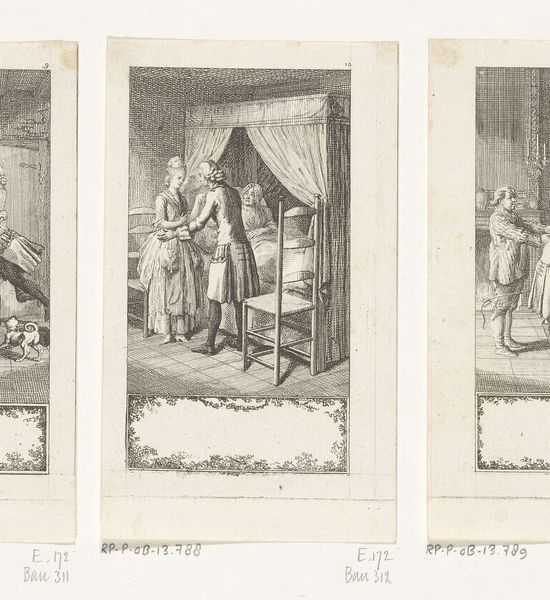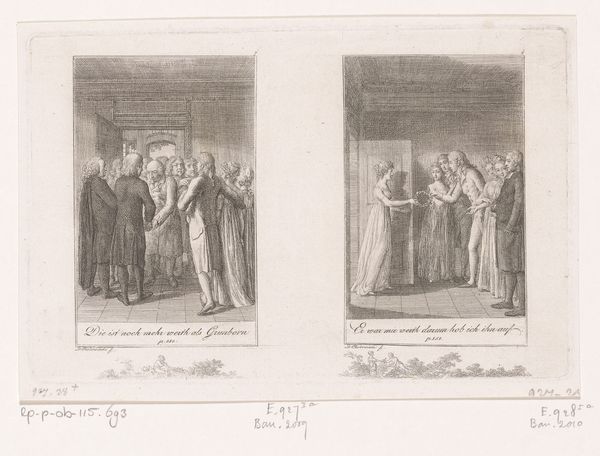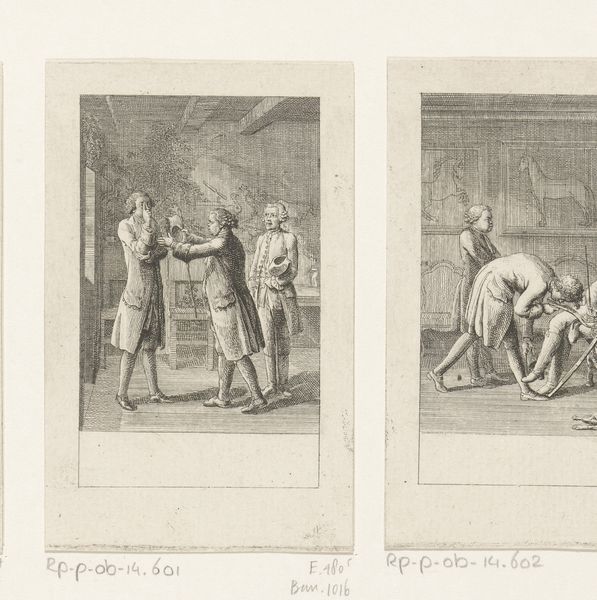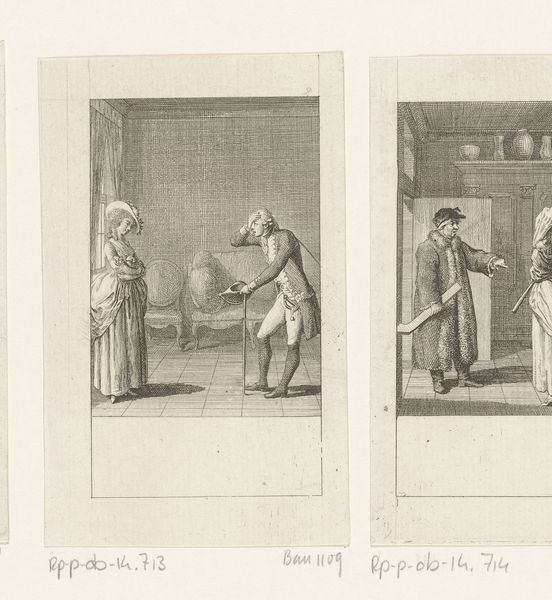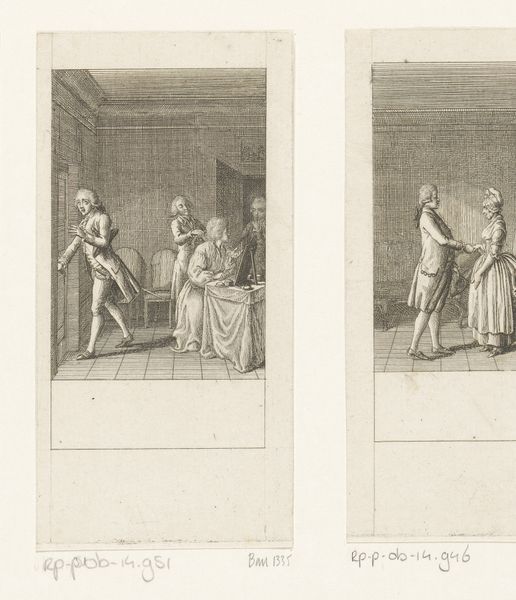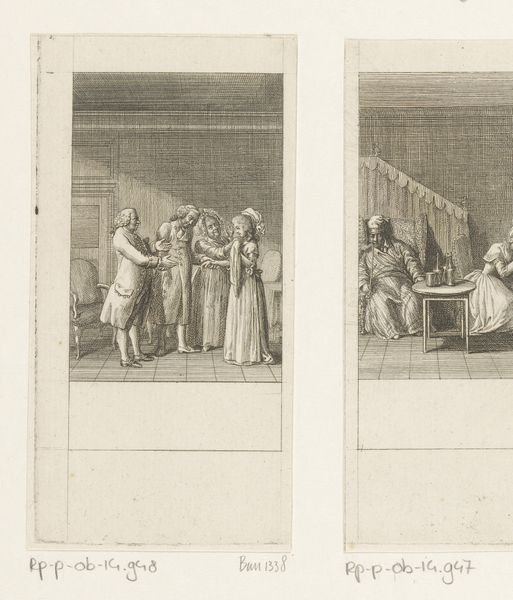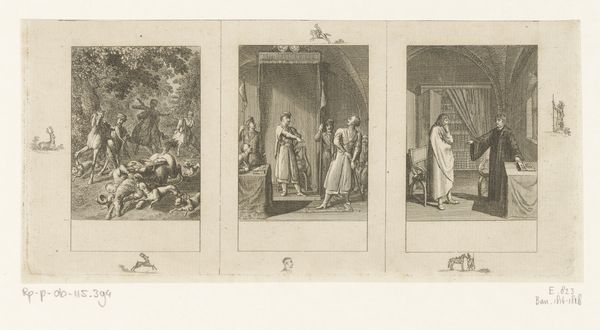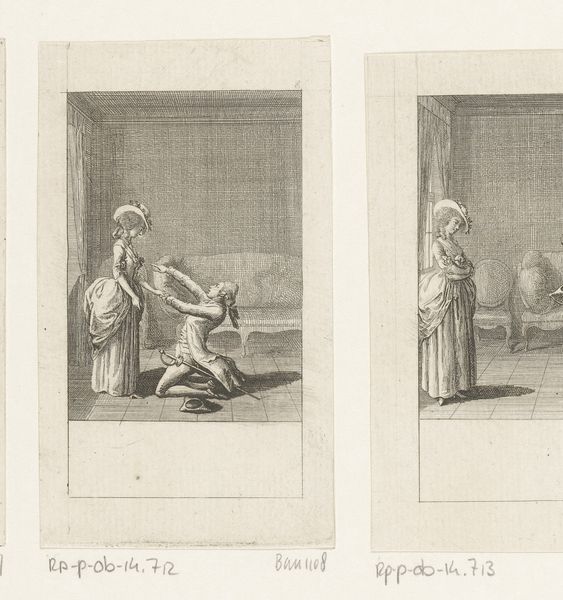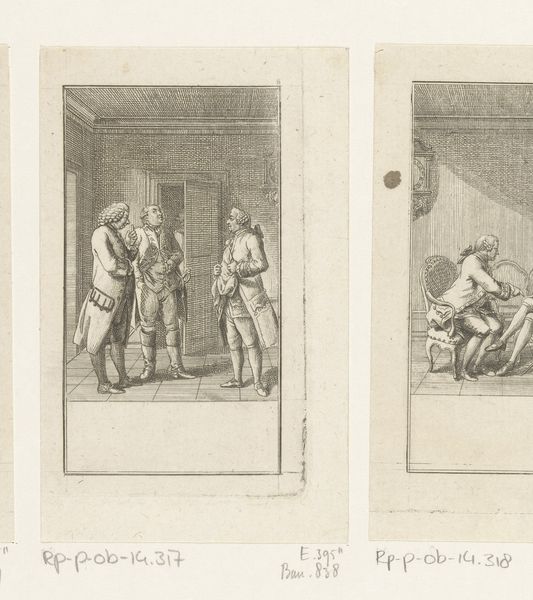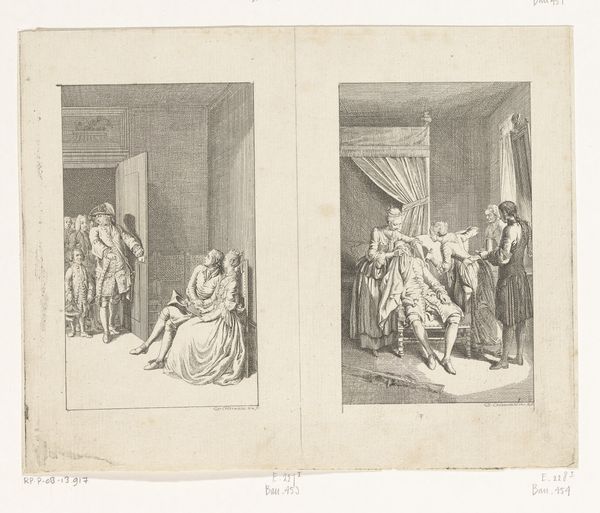
Twee voorstellingen uit Herrmann Lange van August Lafontaine 1800
0:00
0:00
print, etching
#
portrait
#
neoclacissism
#
narrative-art
# print
#
etching
#
genre-painting
Dimensions: height 125 mm, width 193 mm
Copyright: Rijks Museum: Open Domain
Curator: Here we have Daniel Nikolaus Chodowiecki's "Two Scenes from Herrmann Lange by August Lafontaine," created around 1800. It’s an etching printed on paper, and part of the Rijksmuseum's collection. Editor: It has a theatrical feel. Two vignettes, like stage sets. There’s an unsettling domesticity… something feels slightly off-kilter. Curator: Absolutely. Chodowiecki was deeply involved in the literary and artistic circles of his time, often creating illustrations for popular novels. This piece, for example, visualizes scenes from Lafontaine's work, reflecting the era’s burgeoning interest in sentimental storytelling and moral instruction. The images themselves also remind me of the burgeoning print industry and a middle-class thirst for depictions of contemporary life. Editor: Visually, notice the symbolism employed. In the left scene, you've got this anxious flurry of activity surrounding what seems like a birth, with the older woman at the doorway gesturing outward. Whereas in the other frame we have a confrontation with rigid social cues like the table between the two figures representing a clear barrier, physically but socially too. Is it an intervention of some sort? The character almost shrinking backwards suggests guilt and humility. Curator: It's a fascinating juxtaposition. Chodowiecki captured everyday life during the transition between Neoclassicism and early Romanticism, both stylistically and thematically. The left portrays communal warmth and anxiety around new life and the right, reflects on social transgressions, possibly, within a regulated world of duty and societal judgement. There is this sense of tension typical in much of 18th Century artistic exploration of moral ambiguities and human behavior. Editor: Precisely, they reflect prevailing social and cultural values. Look, the framing device overhead also creates the separation. Yet also unifies the dual pictures, linking innocence to something… potentially its loss? It emphasizes their intertwined fates or contrasting narratives. The image, in my interpretation, transcends simple illustration to explore universal themes of community and social structures of constraint versus the freedom of living a good life! Curator: The etching itself would have been easily disseminated, shaping public opinion. Chodowiecki engaged directly with social commentary, challenging established norms with subtle visual critiques embedded within narratives accessible to the burgeoning reading public. Editor: It is interesting how this scene can speak so powerfully even centuries later, the language of gesture is universal, transcending spoken dialogue to deliver its lesson. It remains open for endless interpretation. Curator: A poignant commentary on the societal expectations, private lives and moral judgement. Editor: And also, perhaps a bit about self forgiveness.
Comments
No comments
Be the first to comment and join the conversation on the ultimate creative platform.


